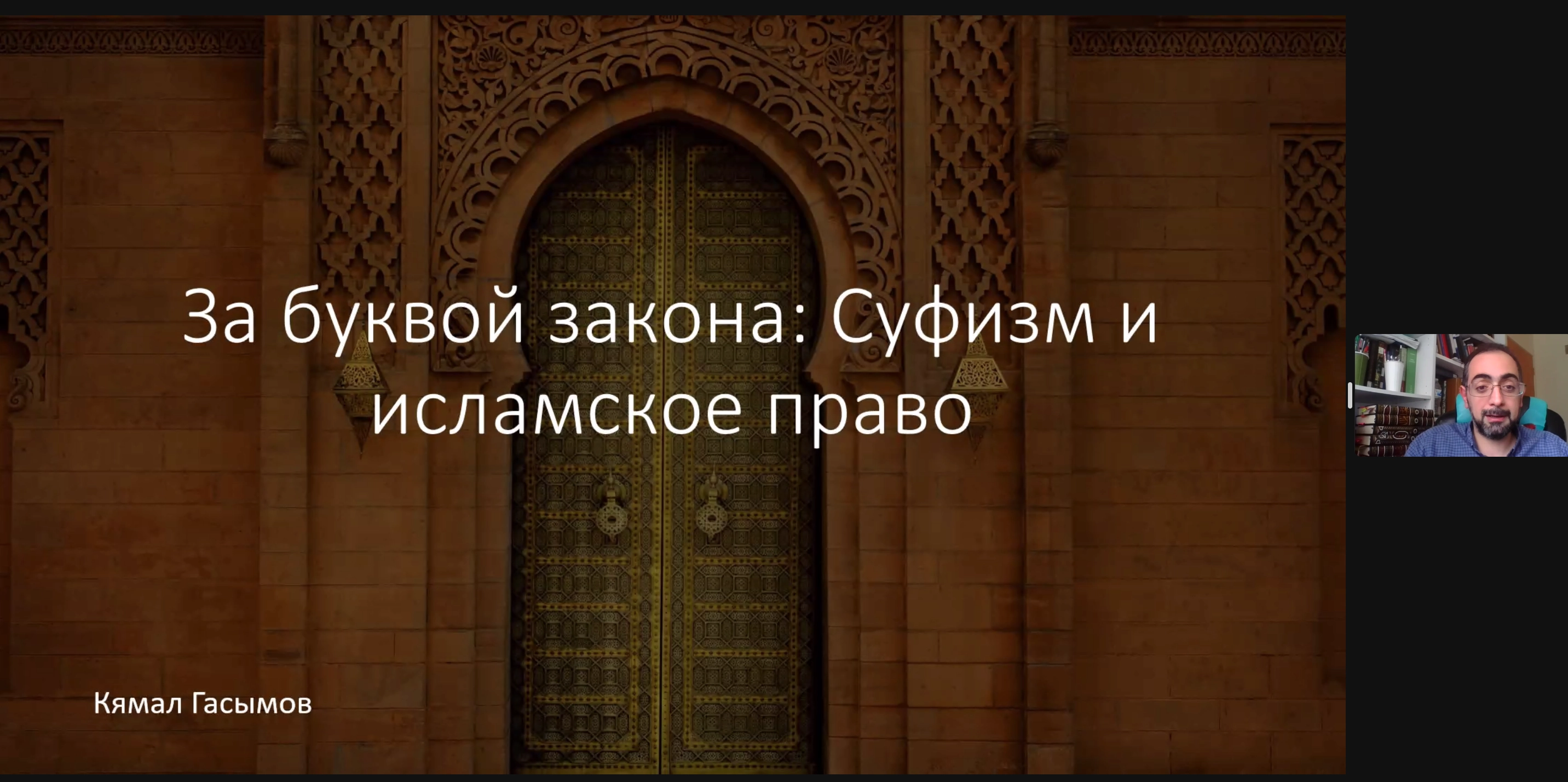On June 15, Kamal Gasimov, a doctoral student at the Department of Middle Eastern Studies of the University of Michigan, gave a lecture "Beyond the Letter of the Law: Sufism and Islamic Law".
First of all, Kamal Gasimov outlined the meaning of Sufism, as an Islamic ascetic-mystical movement that emerged in the late 8th century in the territory of Umayyad and Abbasid caliphates (Iraq, Syria, Khorasan, Central Asia). Early Muslim ascetics (zuhhad), devotees ('ubbad), ascetics (nussak) and Sufis (sufiya; mutasavvifa) tried to purify themselves from defilement, get rid of attachment to worldly goods, and achieve the ultimate intimacy with God. The main practices used by Sufis were self-contemplation, fasting, voluntary poverty, etc.
The Sufi tradition distinguishes two main theoretical and practical schools of Islamic mysticism (the period of consolidation of Sufism, 9th-10th centuries):
- "Intoxicated Sufism" by Abu Yazid al-Bistami (d. 875).
- "Sober Sufism" by al-Junaid al-Baghdadi (d. 810).
At the same time, at different periods of Islamic history, Muslim jurists often accused Muslim mystic ascetics (Sufis) of deviating from Shariah norms and preaching various "heretical" ideas. However, Sufi texts from both the early period (10th-11th centuries) and the later period (15th-16th centuries) show that many Sufis not only identified Islamic law as one of the foundations of the mystical path, but also developed their own particular approach to Islamic legal theory and ritual practice.
More than 60 participants from Kyrgyzstan, Kazakhstan, Georgia, Uzbekistan, Ukraine and other countries registered for the lecture. Participants thanked lecturer Kamal Gasimov for a very informative and interesting lecture. The lecture will soon be available on the Institute of Knowledge Integration's YouTube channel.









